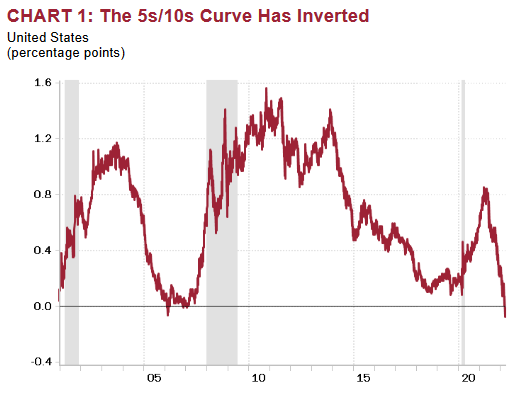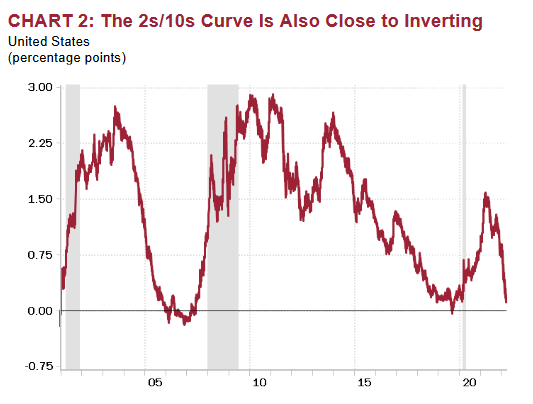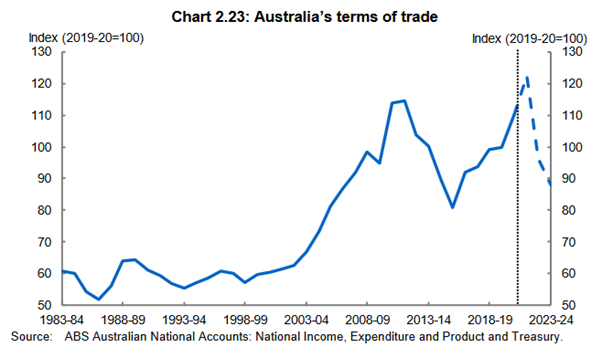The bond market is telling you a recession is coming
A few days ago, the yield on the 10-year bond fell below the yield on the 5-year bond. This is very unusual. Normally, the longer the duration of the bond, the higher the interest rate.
But when it’s the other way, it means the ‘yield curve’ is inverted. And it spells trouble. For the economy, that is. Looking at a visual representation of the curve, or ‘spread’, between the 5 and 10-year bond yields, the last time the spread fell below zero was in 2006. By late 2007, the US economy was in recession, and the great credit crises followed thereafter.
I’m not suggesting another credit crisis is around the corner. But a recession is a much higher probability than what it’s been for a long time.

Source: Rosenberg Research
It’s not just the 5 and 10-year curve. The 2 and 10-year curves inverted this week too, although the chart below doesn’t show the latest move. At the close of Thursday’s trading in the US, the 2-year bond yield was 2.34% while the 10-year was 2.33%.
A tiny inversion, but inversion nonetheless.

Source: Rosenberg Research
What’s going on?
Basically, the short end of the yield curve is responding to the Fed’s plans on pushing official interest rates much higher this year. But the long end of the curve is saying such tightening is going to cause an economic slowdown/recession.
Plenty of people dismiss this indicator, usually out of self-interest. But it’s one of the best recession predictors there is.
But, to be clear, it isn’t a predictor of stock market highs or lows. The stock market marches to the beat of its own drum. For example, despite the bond market’s warnings, the S&P500 continues its bounce higher after it’s early year sell-off. As you can see below, it has recouped some of this year’s losses and is now less than 4% from its all-time highs.

Source: Optuma
But it’s running into selling pressure so the next week or so will be interesting. My view is that this is just a bounce to clear out an oversold condition. There are plenty of headwinds coming. The bond market sees them, the stock market soon will too.
Australia, on the other hand, is in a much stronger position according to the local bond market. The 10-year yield currently trades around 2.85% while the 2-year yield is around 1.83%. There’s around 100 basis points in that ‘spread’. In other words, there is no recession on the horizon.
There are a few reasons for that.
Firstly, the RBA has been hugely accommodative and continues to be so, despite rising inflationary pressures. According to the just released budget papers, REAL economic growth for 2021-22 is forecast to be 4.25%, with NOMINAL growth of 10.75%! Yet official interest rates remain at 0.1%.
From the budget papers:
Nominal GDP is forecast to grow by 10¾ per cent in 2021-22 compared to 6½ per cent at
2021-22 MYEFO. The upgrade to nominal GDP growth in 2021-22 is largely driven by
higher commodity prices…’
The higher-than-expected export values are expected to provide additional support to
the Australian economy through higher profits and government revenue.
Nominal GDP is expected to grow by ½ of a per cent in 2022-23 and by 3 per cent in
2023-24. The subdued growth across these years reflects a sharply falling terms of trade
due to an assumed decrease in commodity prices to levels more consistent with
long-term fundamentals (Chart 2.23). This will be partly offset by a tight labour market
that increases output and generates robust income and consumption growth.
Additionally, rising wage growth is expected to lead to a permanent increase in the labour share of income.’

Source: Budget.gov.au
On the fiscal front, policy is helpful too. The budget deficit is expected to be 3.5% of GDP in 2021-22, and 3.4% next year.
So you’ve got strong commodity prices boosting nominal GDP into double digits, along with budget deficits and deeply negative real interest rates.
No wonder the economy and stock market are doing well!
But don’t forget, all this is priced in. And although Australia is insulated from the current global turmoil by being a commodity-exporting nation, there are second-order impacts that need to be considered.
For example, Europe, as a net energy importer, is in worse shape than the US. Europe is in turn China’s largest export market. So a slowdown there will soon hurt the Middle Kingdom, at the same time as it is trying to deflate its property bubble.
And China, of course, is Australia’s largest export market.
So the government is right to expect commodity prices (in general) to correct next year and deliver a flat nominal growth outcome.
Nominal growth is what matters for the stock market in aggregate. But you’d have to say that the market doesn’t agree with the government’s conservative outlook.
Despite the risks to the Chinese economy, Rio and BHP’s share prices continue to recover from the late 2021 sell-off.
But if the government’s forecasts prove correct, and the Aussie economy experiences flat nominal growth next financial year, then the broader stock market is likely to struggle.
I’m not saying it will be a full-blown bear market. But it will be one for stock pickers, rather than the index investors.
Never miss an insight
Enjoy this wire? Hit the ‘like’ button to let us know. Stay up to date with my content by hitting the ‘follow’ button below and you’ll be notified every time I post a wire.
Not already a Livewire member? Sign up today to get free access to investment ideas and strategies from Australia’s leading investors.
4 topics

